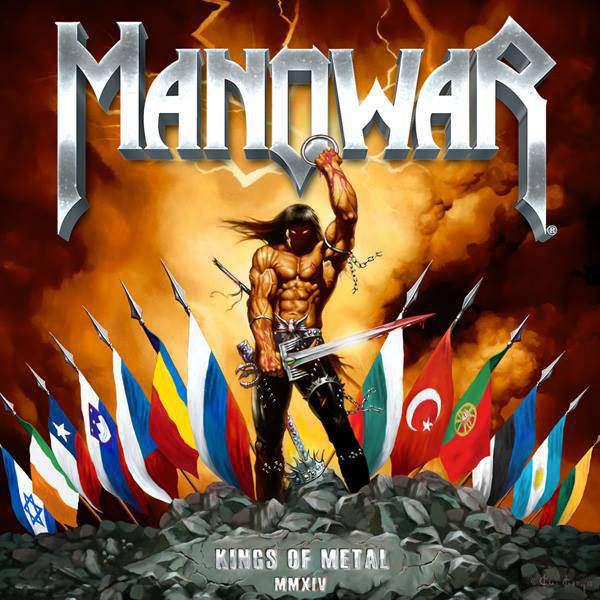 This piece by Douglas Hofstadter was funny, but I don’t agree. I think common usage is the king, and people should only contravene the king’s orders under dire circumstances. I also don’t agree with Vihart’s tweet that “Gender neutral pronouns have failed again, and again, and again… which means they have the persistence to someday succeed.” So the more I fail, the more likely I am to succeed? Doesn’t sound mathematically rigorous. The English language changes to whatever form it wants, nobody can predict it, and none of those changes are intrinsically better or worse – the Grimm’s Shift of ancient times was no different to the “ebonics” of today. Just a mutation that seems to have survived.
This piece by Douglas Hofstadter was funny, but I don’t agree. I think common usage is the king, and people should only contravene the king’s orders under dire circumstances. I also don’t agree with Vihart’s tweet that “Gender neutral pronouns have failed again, and again, and again… which means they have the persistence to someday succeed.” So the more I fail, the more likely I am to succeed? Doesn’t sound mathematically rigorous. The English language changes to whatever form it wants, nobody can predict it, and none of those changes are intrinsically better or worse – the Grimm’s Shift of ancient times was no different to the “ebonics” of today. Just a mutation that seems to have survived.
But if we were able to redesign the English language to be as convenient as possible, what would we do?
Graphological changes
– Make every character unique – no mirrors or flips. Make it impossible to mistake b for backwards d, or M for upside down W.
– Rearrange the alphabet so that commonest letters are at the front, and less used letters are at the back. There’s no reason the alphabet should run A-B-C-D-E-F-G-H-I-J-K-L-M-N-O-P-Q-R-S-T-U-V-W-X-Y-Z instead of E-T-A-O-I-N-S-R-H-D-L-U-C-M-F-Y-W-G-P-B-V-K-X-Q-J-Z. Maybe then we won’t call it the alphabet, we’ll call it the epsilontau.
– Optimise the English script for handwriting. Make it so that x (for example) can be written with one stroke – perhaps by connecting the two lines with an arch.
Linguistic changes
– Incorporate Japanese’s honorifics. They’re useful as hell. They let you add trick out sentences out with emotion and color and nuance. “Yes, Spongebob-sama” is a nearly the opposite of “Yes, Spongebob-chan.”
– Add some pronoun modifiers so we can tell multiple people of the same gender apart. You want effective anti-gay therapy? Imagine giving yourself an embolism trying to puzzle out gay erotica (“He pressed him closer and ran his teeth over his neck…”). Maybe call the subject him1 and people in further proximity him2, him3, etc.
– Fix “w” so that it isn’t three syllables long. Have you ever tried to give someone a website address and had your mouth block up with dubya-dubya-dubyas like a jammed printer? This article suggests a pronounciation of “wu”.
– Remove the indefinite article, like Greek does. And if we get get away without the definitive article, so much the better. I hate a‘s and the‘s sitting in between the real words. Somehow they cause my trypophobia to flare up.
No Comments »
 Answer: read his books. It will happen sooner than you think.
Answer: read his books. It will happen sooner than you think.
It works like this. You start reading a Haruki Murakami book. It doesn’t matter which one. You’ll be blown away. You might even think he’s the best author you’ve ever read.
Then you’ll read a second, third, and fourth book. At some point, the bloom will leave the rose. You’ll become bored of his style, bored of alienated male characters eating spaghetti and listening to records, bored of the way he invokes the warmth of the Beatles and Respighi to cover up the emotional coldness of his stories. You might read a fifth book. But you definitely won’t think of him as the best author you’ve ever read.
I’ve had this experience many times.
When I was 7 I was a huge Goosebumps fan. It was revelatory that books could be as exciting as a cartoon. Somewhere in Goosebumps 2000, I started to wonder: why does he give his characters names? They are interchangeable. Call them “The Boy Character” and “The Girl Character”, “The Oblivious Father/Mother”, “The Bully”, and so on. Why not? Wouldn’t it save mental clock cycles if you didn’t need to figure out which character occupies what role in the story?
When I had this realisation, I could take no pleasure in Goosebumps. I’d seen what was behind the curtain. I started to feel a bit resentful, as if RL Stine had swindled me.
When I was 12 I read Stephen King. The realism of his stories appealed to me. No matter how bizarre and surreal they get, he never forgets to give his characters dry mouths and headaches.
But after many books, he lost me. I’ve read him for so long that I’ve learned all his tricks, and now he seems like RL Stine 2.0 – a sophisticated manipulation artist who presses buttons and jerks you around. I don’t hate him. Put me in a cell with Doctor Sleep and I’d read it. But only after I get bored with playing the cell bars like a xylophone.
When I was 22 I discovered Junji Ito. Extremely atmospheric and frightening HP Lovecraft-inspired manga. I read about 3,000 pages of his stuff, and then suddenly, lost interest. He can’t tell a story very well. I found myself speed-reading through the dialogue to get to the next gory image. I was desensitized to his good points, and chafed raw by his bad points.
Does this sound familiar?
It’s been said that Mad magazine was the last time anyone took fiction seriously. They exposed and deconstructed the machinery of telling stories, and it was now impossible to see a romance scene in a movie without thinking of the inevitable Mad parody. But truthfully you’ll arrive at that realisation without Mad, it just takes time.
Do you have a favourite author? Do you want him to remain your favorite author?
Then never read another of his books again. Not a single one. Even reading another word is contraindicated. You can’t allow the novelty to dissipate. You can’t allow yourself to realise that your favourite author sucks golf balls through a garden hose.
No Comments »
 As I’ve said elsewhere, you can’t really call Manowar a band any more. For the past twenty years they’ve been bassist Joey DeMaio’s Little Alimony Fund That Could, a relentless cash generating machine that probably actually isn’t all that relentless…or cash generating.
As I’ve said elsewhere, you can’t really call Manowar a band any more. For the past twenty years they’ve been bassist Joey DeMaio’s Little Alimony Fund That Could, a relentless cash generating machine that probably actually isn’t all that relentless…or cash generating.
Somewhere around 1992, they lost all their work ethic in the studio, and started filling the gaps with compilations, remasters, re-releases, and a neverending deluge of live albums (if you’re a Manowar completist, you’ve probably bought “Battle Hymns” at least a dozen times.) Here’s Joey DeMaio’s latest “gimme your lunch money” – a re-recording of the band’s legendary 1990 album Kings of Metal.
What a terrible idea.
If you ask a group of Manowar fans to pick the band’s greatest album, half will immediately answer Kings of Metal, and the other half will not be able to agree on a challenger to the throne. I’ve always found it inconsistent and half-cocked, but at its best it’s a superb slab of early power metal, and most of its shortcomings are found at the conceptual level – you can’t really “fix” it. So why this re-recording? Because Joey DeMaio likes caviar.
They changed the tracklisting. Now we start with “Hail and Kill” – fantastic on the 1990 version, dull and slowed down here. Eric Adams’ voice is haggard, clearly Frankensteined together from many edits and overdubs. Then we’ve got the title track. “Other bands play, Manowar kill!” Other bands play, Manowar bilk their fans. “Heart of Steel” sounds pretty solid. I’ll say this, they nail ballads much better than they used to.
Raging speed-fest “Wheels of Fire” is featured here as “On Wheels of Fire”, and sounds muddy, downtuned and shit-awful. The drums actually sound weaker than they did in 1990 – the kind of relentless percussive assault you get from tapping a pencil on a school desk. Then there’s “Blood of the Kings”, which Joey makes annoying as hell by adding all sorts of extra shout-outs to fans in various countries “Argentina, Japan, Portugal, Lithuania, Canada, Spain, Israel…” – is this a geography quiz? Kings of Metal‘s lesser tracks like “Kingdom Come” were mediocre then and remain mediocre now. Note that they didn’t even bother re-recording “Pleasure Slave.”
Eric Adams is showing his age. He used to hit all sorts of ungodly notes in E, now he stays far away from them in D. Joey DeMaio’s a bit too prominent in the mix, frequently turning the album into mud. Karl Logan is actually a saving grace. Most Manowar fans are a bit leery of him, but his dry whammy-abusing style works really well for the band. One of Kings of Metal MMXIV‘s rare treats is a guitar instrumental of “Heart of Steel”, which sounds really powerful and emotional.
But ultimately, Kings of Metal MMXIV is underwhelming and unimpressive – and even if it had been executed perfectly it would still have been a lame cash grab. Why am I still a fan of Manowar? Because Joey DeMaio VERY occasionally decides to boost Magic Circle Music’s bottom line by releasing excellent music. This isn’t one of those times.
No Comments »
 This piece by Douglas Hofstadter was funny, but I don’t agree. I think common usage is the king, and people should only contravene the king’s orders under dire circumstances. I also don’t agree with Vihart’s tweet that “Gender neutral pronouns have failed again, and again, and again… which means they have the persistence to someday succeed.” So the more I fail, the more likely I am to succeed? Doesn’t sound mathematically rigorous. The English language changes to whatever form it wants, nobody can predict it, and none of those changes are intrinsically better or worse – the Grimm’s Shift of ancient times was no different to the “ebonics” of today. Just a mutation that seems to have survived.
This piece by Douglas Hofstadter was funny, but I don’t agree. I think common usage is the king, and people should only contravene the king’s orders under dire circumstances. I also don’t agree with Vihart’s tweet that “Gender neutral pronouns have failed again, and again, and again… which means they have the persistence to someday succeed.” So the more I fail, the more likely I am to succeed? Doesn’t sound mathematically rigorous. The English language changes to whatever form it wants, nobody can predict it, and none of those changes are intrinsically better or worse – the Grimm’s Shift of ancient times was no different to the “ebonics” of today. Just a mutation that seems to have survived.

